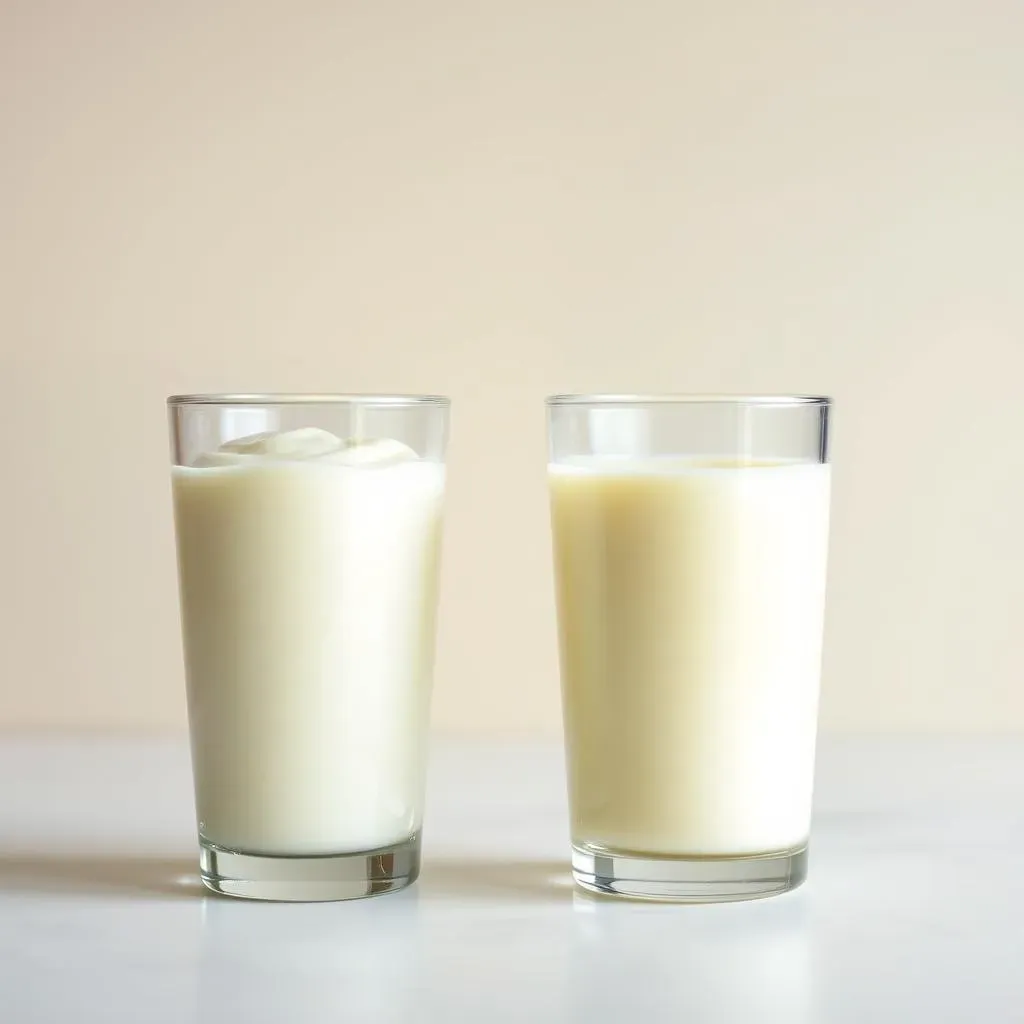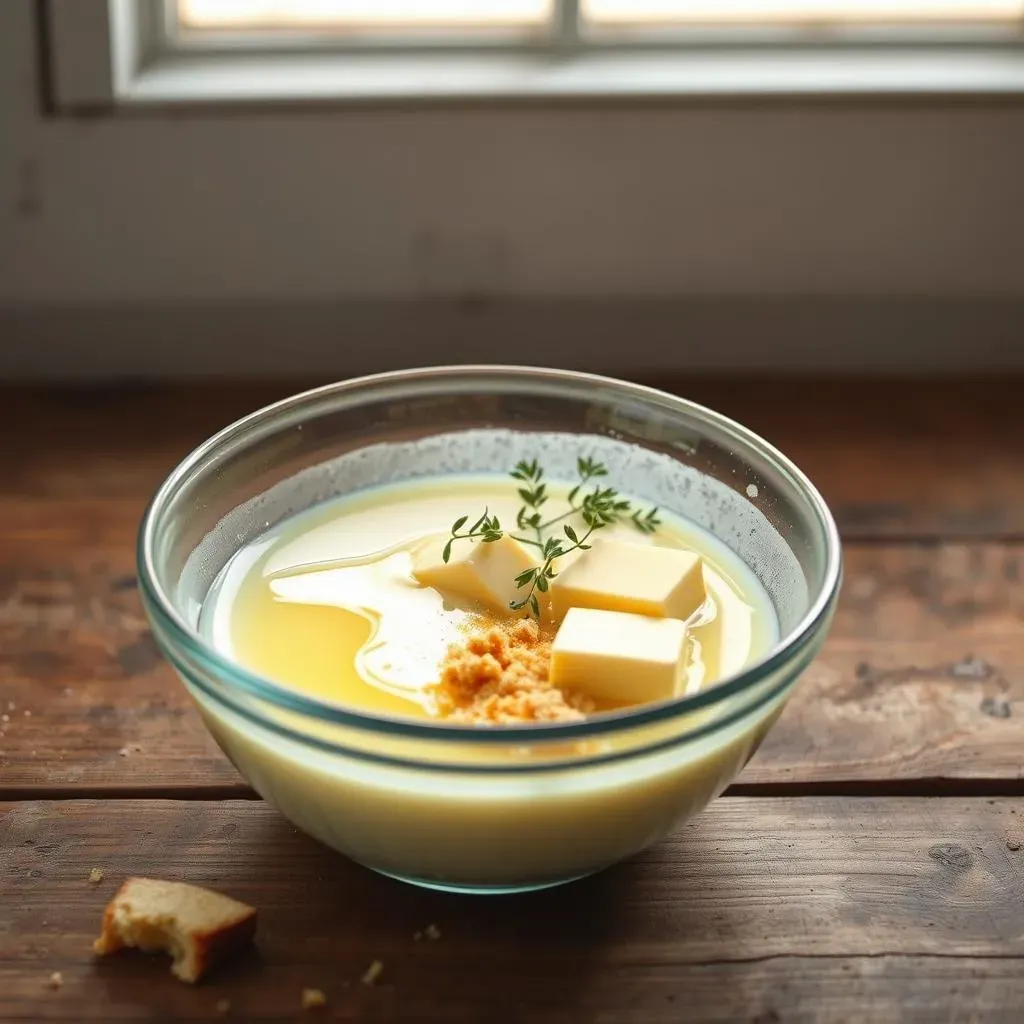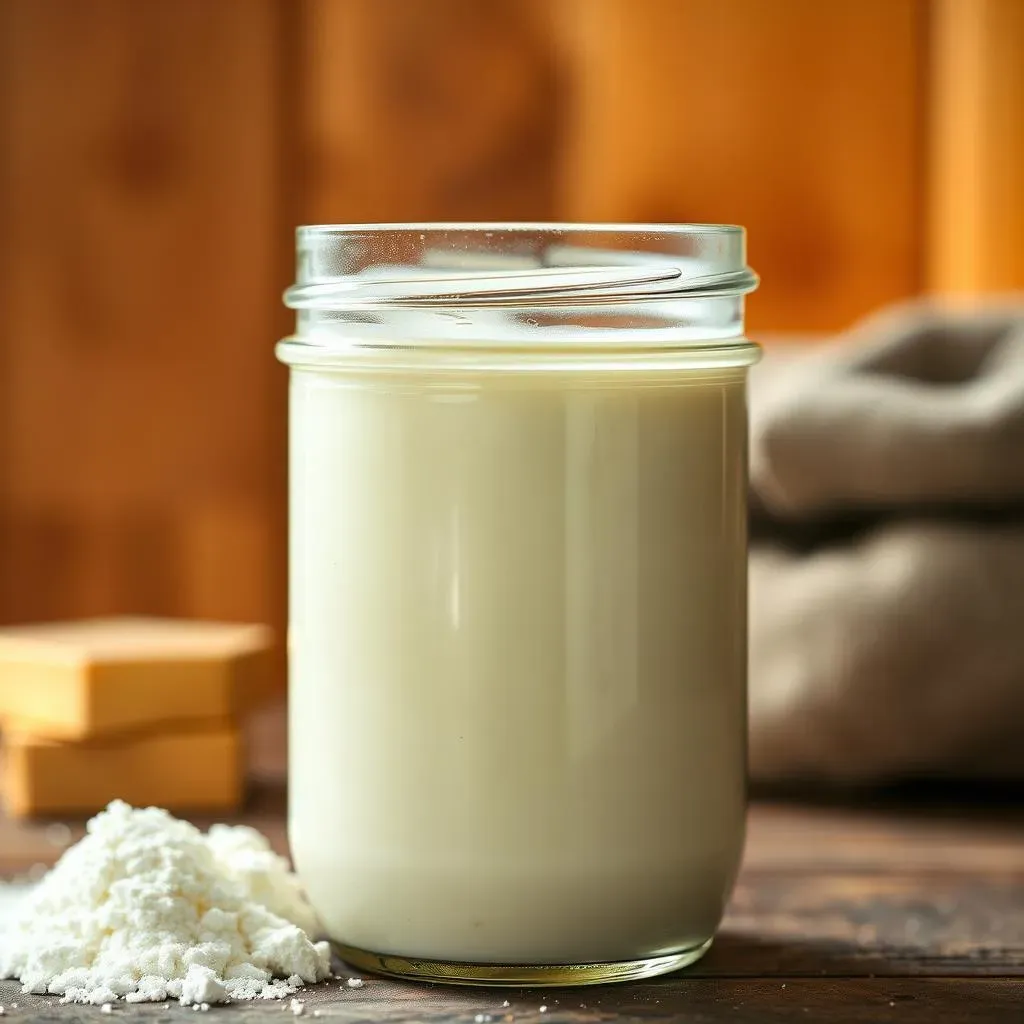Table of Contents
Ever found yourself in the middle of baking, only to realize you're out of sour cream? It's a kitchen crisis many of us have faced. But fear not, because there's a tangy, readily available hero waiting in your fridge: buttermilk. This article will show you how to use a sour cream substitute buttermilk like a pro. We'll start by looking at what makes sour cream and buttermilk different, that means understanding their fat and liquid content. Next, we'll walk through how to swap buttermilk into your baking recipes, so your cakes and cookies still turn out great. Finally, we'll get into the nitty-gritty of adjusting the buttermilk to get the right consistency. Think of this as your guide to never being defeated by a missing tub of sour cream again. Let's get started and make sure you’re always prepared, no matter what your recipe throws at you.
Buttermilk vs. Sour Cream: Understanding the Differences

Buttermilk vs. Sour Cream: Understanding the Differences
The Tangy Tale of Two Dairy Products
so you're staring at your recipe and it calls for sour cream, but all you've got is buttermilk. No panic, they're both dairy but they play different roles. Sour cream is thick, rich, and has a high fat content. It's made by adding lactic acid bacteria to cream, which gives it that signature tang. Buttermilk, on the other hand, is what's left over after churning butter. It's thinner, has less fat, and a slightly different type of tang. Think of sour cream as the luxurious cousin and buttermilk as the more laid-back sibling.
These distinctions are crucial when you are baking. Sour cream adds a lot of moisture and richness because of its fat content, making baked goods tender and moist. Buttermilk also brings moisture, but it can also add a bit of lightness to the final product. So, while they both have a tangy flavor, they behave quite differently in recipes. It's like comparing a slow, steady burn to a quick flash of heat. Knowing this helps you understand how to substitute one for the other.
Feature | Sour Cream | Buttermilk |
|---|---|---|
Consistency | Thick and Rich | Thin and Pourable |
Fat Content | High | Lower |
Flavor | Tangy and Rich | Tangy and Light |
Usage | Adds richness and moisture | Adds moisture and lightness |
Fat and Acidity: Key Players
The fat content in sour cream isn’t just for show; it's a big deal in baking. It's what gives cakes that soft crumb and prevents them from being too dry. Think of it as the oil in a car’s engine; it keeps everything running smoothly. Buttermilk, with its lower fat, relies more on its acidity to bring flavor. That acidity is what helps tenderize gluten in baked goods.
It's like that little bit of lemon juice you add to a marinade to make meat super tender. So, when you're using buttermilk as a sour cream substitute, you're not just swapping out a liquid. You're also swapping out a certain amount of fat and a certain type of acidity. It's a balancing act, and that's what makes baking so much fun, right?
- Sour cream is high in fat.
- Buttermilk is lower in fat.
- Sour cream adds richness and moisture.
- Buttermilk adds moisture and lightness.
- Both have a tangy flavor but behave differently in recipes.
How to Use Buttermilk as a Sour Cream Substitute in Baking

How to Use Buttermilk as a Sour Cream Substitute in Baking
The Simple Swap: Buttermilk Basics
Alright, so you're ready to swap buttermilk for sour cream in your baking, that's great. The first thing to remember is that buttermilk is much thinner than sour cream. If you just swap them one-to-one, your batter might end up too runny. So, a good rule of thumb is to use about 3/4 cup of buttermilk for every 1 cup of sour cream. This helps maintain the right consistency. It's like trying to pour water into a sandcastle; too much, and it all falls apart, but the right amount, and it holds up great.
Also, because buttermilk has less fat, your baked goods might not be quite as rich as they would be with sour cream. But, don't worry, this is where a little extra butter or oil can come to the rescue. Just adding a tablespoon or two of melted butter or oil can help make up for that missing fat and keep your cakes and muffins moist. Think of it like adding a little extra hug to your baked goods; it makes them feel more loved.
Sour Cream | Buttermilk |
|---|---|
1 cup | 3/4 cup |
Add Fat | Add 1-2 Tbsp of melted butter or oil |
Baking with Buttermilk: Tips and Tricks
When you use buttermilk, pay attention to the other liquids in your recipe. If you are making a cake and you're swapping sour cream for buttermilk, you might need to reduce the amount of other liquids a little bit. This could be milk, water, or even eggs. It's like balancing a seesaw; if one side is heavy, you need to adjust the other side to keep it even.
And here’s a neat trick: if you want to mimic the tanginess of sour cream, add a tiny bit of lemon juice or vinegar to your buttermilk. Just a teaspoon is usually enough. This can really bring out the flavor in your baked goods. It is a bit of a secret weapon that can make your baked goods taste even better. It is like adding a pinch of salt to a chocolate chip cookie; it just makes everything pop.
- Use 3/4 cup of buttermilk for every 1 cup of sour cream.
- Add 1-2 tablespoons of melted butter or oil to compensate for fat.
- Reduce other liquids in the recipe if needed.
- Add a teaspoon of lemon juice or vinegar to enhance tanginess.
Adjusting Buttermilk for the Perfect Sour Cream Substitute

Adjusting Buttermilk for the Perfect Sour Cream Substitute
Thickening Buttermilk: A Simple Solution
so you've got your buttermilk, you've done the 3/4 cup swap, and you added a bit of extra fat, but it still feels a little too thin, right? No sweat, there's a simple trick to thicken it up. You can add a tablespoon of cornstarch or flour to your buttermilk, whisking it in really well to avoid any clumps. It's like giving your buttermilk a little extra body. Then, let it sit for a few minutes so it can thicken up a bit. It's not going to get as thick as sour cream, but it will be closer to the right consistency. Think of it like adding a little extra support to a building; it makes it stronger and more stable.
Another way to thicken buttermilk is to use a bit of Greek yogurt. If you have some on hand, blend a couple of tablespoons into your buttermilk, it will work wonders. Greek yogurt is already thick and creamy, so it helps bring your buttermilk closer to that sour cream consistency. It also adds a touch more tang, which is a nice bonus. It's like adding a secret ingredient to a recipe; it just makes everything come together perfectly.
Method | How to | Result |
|---|---|---|
Cornstarch or Flour | Add 1 tablespoon, whisk well, let sit | Thicker consistency |
Greek Yogurt | Blend 2 tablespoons into buttermilk | Creamier, tangier result |
Balancing Flavor and Texture
Now, let’s talk about flavor. We know buttermilk has a nice tang, but it's not quite the same as sour cream's tang. If you want to get closer to that sour cream flavor, a little lemon juice or white vinegar is your best friend. Add a teaspoon at a time, tasting as you go, until you get the right level of tanginess. It's like adding that last little touch of seasoning to a dish; it makes all the difference. Don't overdo it, though; you don't want your baked goods to taste like a lemon meringue pie unless that’s what you're going for.
And don't forget, the temperature of your buttermilk matters too. If your buttermilk is cold, it can make your batter thicker. If it's too cold, it can even affect how well your ingredients combine. So, it's a good idea to let it sit at room temperature for a bit before you use it, especially when you're adjusting the consistency. It’s like letting a good wine breathe; it brings out the best in it.
- Add lemon juice or vinegar a teaspoon at a time to enhance tang.
- Taste as you go to find the right balance.
- Let buttermilk come to room temperature before adjusting.
Wrapping Up: Buttermilk as Your Go-To Sour Cream Stand-In
So, there you have it – buttermilk isn't just for pancakes anymore. It's a fantastic sour cream substitute, especially when you're in a pinch. By understanding the subtle differences between the two, and making some smart adjustments, you can confidently swap them in your recipes. Now, you can bake without fear of a missing ingredient. Remember, a little knowledge in the kitchen can go a long way. Next time you're staring at an empty sour cream container, reach for that buttermilk and keep on baking! It's all about being resourceful and having fun in the kitchen.